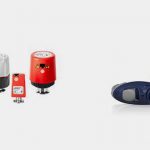Vacuum pumps take in any and all contaminants that come in from the pump inlet. There are four relevant forms of contaminant:
- Vapors
- Liquids
- Solids
- Biological Agents
Vapors
There are some vapors that can pass through a vacuum pump without harming it; all others should be passed through a condenser to convert from vapor form into liquid, and then drained off before they can make it into the pump. That’s because even small quantities of vapor can take up large volumes, distorting the effects of a vacuum pump or air compressor.
If the pump casing fills with vapor, it can condense inside the pump, which can overload the motor and damage the pump. Also, if the vapors condense within the water ring, the vapor pressure of the water seal will rise, which can encourage cavitation.
A good recommendation is that a ‘cold wall’ condenser be put in line before the liquid separator (see below) unless the vacuum pump uses a steam ejector to produce the vacuum, in which case no condenser is needed except where extreme efficiency is mandated.
Liquids
Liquid condensing inside the vacuum pipeline — or worse yet, in the pump itself — can require a complete disassembly of the pump. Depending on the kind of water suspended in the vacuum stream, different tools may be necessary:
A water trap or knockout pot for visible ‘slugs’ of water and suspended aerosols
- Or a cyclonic separator for water vapors and other particles that are not particularly heavier than the air itself.
Either one of these should be installed after the condenser but prior to the vacuum pump intake.
Solids
Solid particles are filtered out with exactly that — filters. Filters come in paper, hydrophobic, synthetic fiber, fiberglass, metal mesh, or other more exotic types, but they all have the same basic purpose: to let air through while keeping solid particles suspended in the air trapped in the filter. Most industrial purposes require either high-efficiency particulate air (HEPA) or ultra-low penetration air (ULPA) filters. Such filters should be installed prior to the condenser.
Biological Agents
In most cases, a HEPA filter will take care of 99.9% of biological agents. Even given that fact, every wet vacuum pump should be configured in such a way that it can be quickly and safely sanitized — and it should be sanitized regularly, at least twice a year, even if no sign of biological contamination has been noted.























